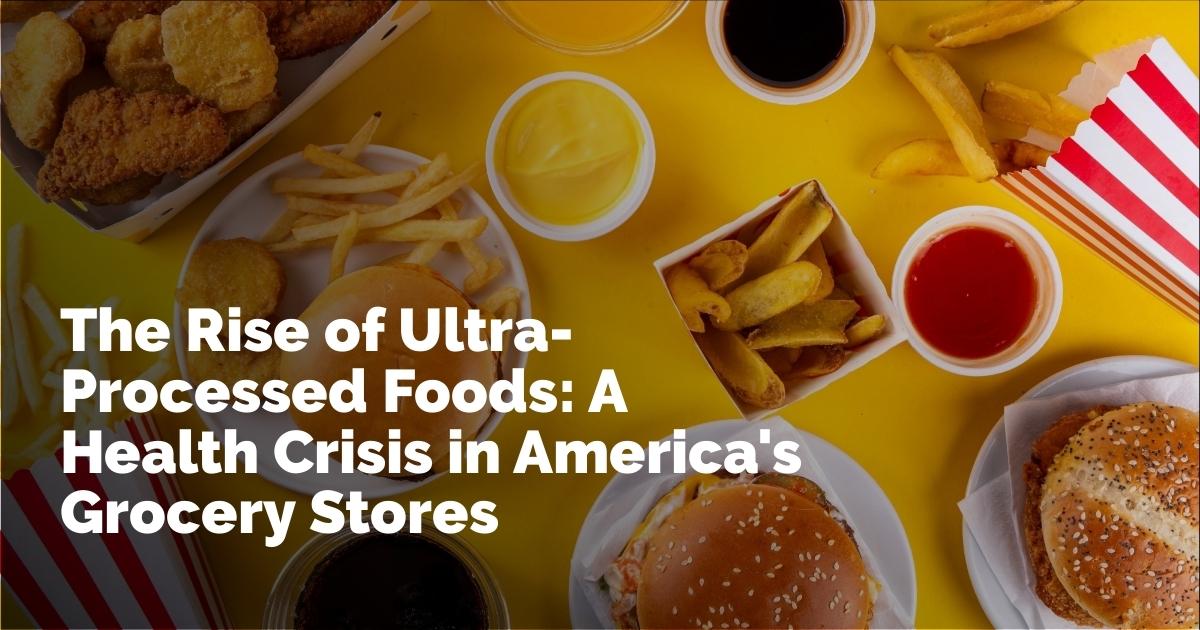Ultra-Processed Foods in the American Diet
In recent years, ultra-processed foods (UPFs) have become a prevalent component of the American diet, making up nearly half of grocery purchases across the United States. This trend has raised significant concerns among public health professionals due to the potential negative health impacts associated with these types of foods. This article explores recent research findings on the consumption patterns of ultra-processed foods in the U.S., particularly among different income and demographic groups, and examines the implications for public health.
Understanding Ultra-Processed Foods
Ultra-processed foods are highly engineered products that contain additives and ingredients derived from food, many of which are not typically found in home cooking. These foods are produced to be convenient, long-lasting, and often enticing in flavor, leading to overconsumption. Common examples of UPFs include packaged snacks, sugary soft drinks, ready-to-eat meals, and confectionery products.
The NOVA classification system, which is used to categorize foods based on their processing levels, identifies UPFs not only by their degree of processing but also by the presence of specific additives such as flavor enhancers, sweeteners, and preservatives. This system helps distinguish between minimally processed foods and those engineered to extend shelf life and maximize palatability.
The pervasive presence of UPFs in the diet has been linked to a range of health issues, such as heart disease, obesity, cancer, depression, and sleep disorders. Consequently, understanding the dynamics of UPF consumption is crucial for addressing related health risks at a population level.
Patterns of UPF Purchases in the U.S.
A recent study, published in Public Health Nutrition, analyzed data from a large, nationally representative sample of 59,939 U.S. households to understand patterns in UPF purchases. The data revealed that UPFs comprised about 43% of total grocery items, with almost half of food purchases and more than one-third of beverage purchases being classified as ultra-processed.
Snacks, soft drinks, and mixed dishes represented the highest proportion of UPF purchases. The study highlighted that the prevalence of UPF purchases was significantly higher in households with lower incomes and lower education levels. Non-Hispanic white households were particularly notable for their high UPF consumption, followed closely by non-Hispanic Black and Hispanic households.
Demographic Influences on UPF Consumption
The study explored various demographic factors that contribute to UPF purchasing patterns. It found that socioeconomic elements such as income and education greatly influence the level of ultra-processed food consumption. Households with lower incomes and education levels tended to purchase more UPFs, indicating a socioeconomic disparity in dietary habits and access to healthier food options.
Racial and ethnic differences were also observed, with non-Hispanic white households having the highest percentage of UPF purchases, while other ethnic groups purchased fewer UPFs, particularly in the category of carbonated drinks. The study suggests that these patterns might be shaped by cultural preferences, varying degrees of exposure to and education about healthy eating practices, and economic constraints.
The Impact of UPF Consumption on Public Health
The dominance of UPFs in the American diet has significant implications for public health, given the strong associations between UPF consumption and chronic diseases. The study emphasizes the urgent need for policy interventions to reduce UPF consumption, improve diet quality, and mitigate health risks associated with excessive intake of processed foods.
Potential strategies to address this issue could include implementing nutritional education programs, providing incentives for purchasing minimally processed foods, and regulating marketing and labeling practices to accurately reflect the health risks posed by high UPF consumption. Furthermore, exploring subsidies or support for healthier food options could help alleviate the socioeconomic barriers many lower-income households face.
Limitations and Future Research
While this study provides valuable insights into UPF purchasing behaviors, it has its limitations. The research was based on recorded purchase data from 2020, which was a year marked by the COVID-19 pandemic, potentially influencing purchasing habits. Additionally, the study relied solely on in-home purchases, meaning that it might underestimate UPF consumption, which could also occur extensively outside the home at restaurants, convenience stores, and fast-food outlets.
Future research could expand on these findings by incorporating consumption data from out-of-home dining scenarios and exploring the long-term health outcomes associated with varying levels of UPF intake. Additionally, studies could explore the effectiveness of different policy approaches to reducing UPF consumption and improving public health outcomes.
Conclusion
The pervasive consumption of ultra-processed foods in the United States poses significant public health challenges, particularly for lower-income and less-educated populations. The nutritional disparities highlighted by this study underscore the need for comprehensive national policies aimed at reducing UPF intake and promoting healthier dietary choices. As public health researchers continue to illuminate the links between diet and health, addressing the root causes of UPF consumption will be essential in fostering a healthier population and reducing the burden of diet-related chronic diseases.
출처 : Original Source

